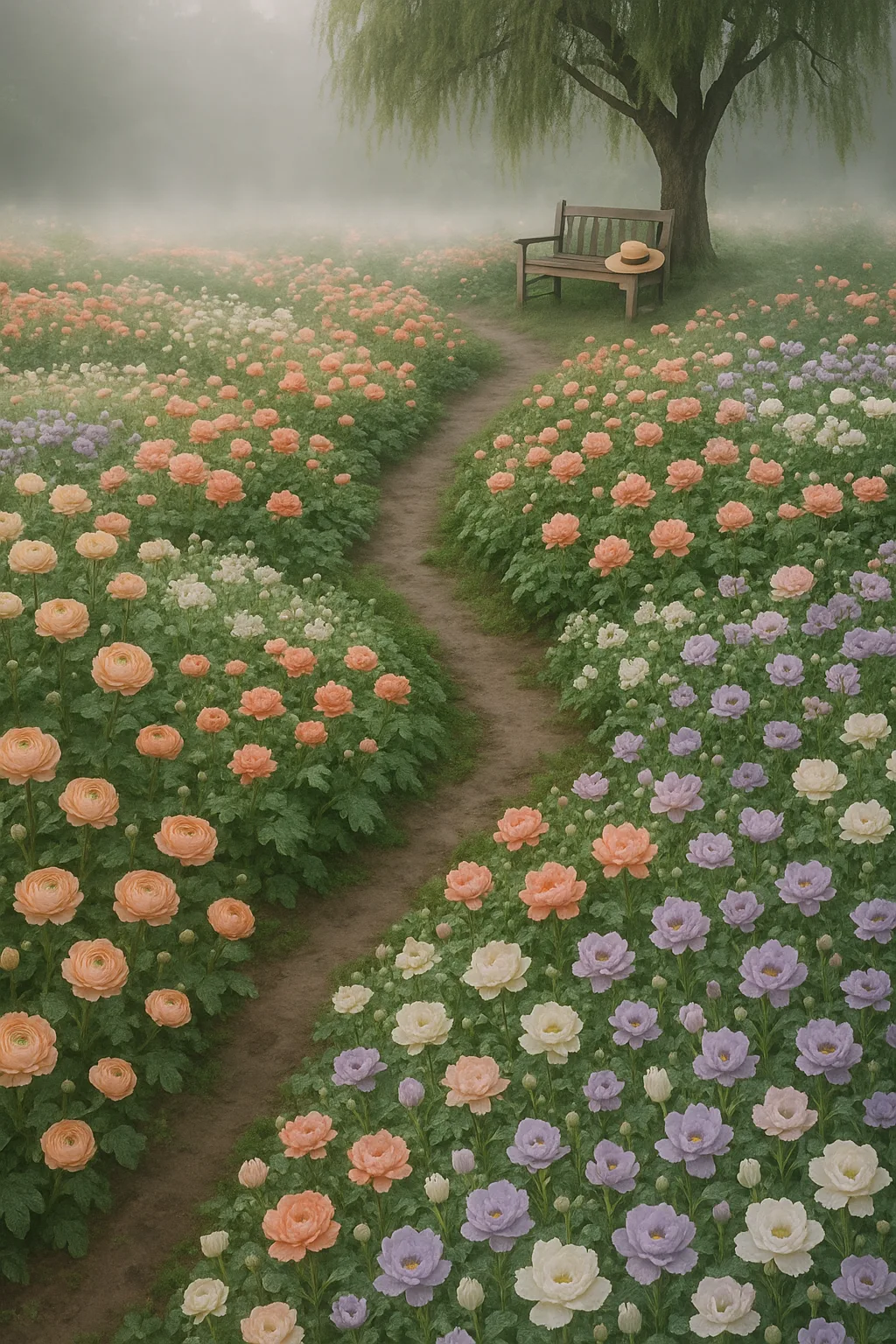Where Wildflowers Whisper: A Path Through Soft Remembrance
An Image That Speaks Beyond Sight
A winding path parts a sea of wildflowers, their hues soft and deliberate—peach, ivory, lavender, and coral—each petal unfolding like a secret held too long. In the distance, a weathered wooden bench rests beneath the hush of morning mist. A single straw hat, forgotten or left with care, adorns the seat like a punctuation mark at the end of a love letter.
This is more than a field; it is an invitation. It becomes a tender threshold between what was and what still lingers. While each bloom leans slightly as though listening, breathing, remembering, the quiet curve of the path suggests choice—yet without urgency. Clearly, you are not meant to rush through. Instead, you are meant to arrive slowly. To feel.
The Heart’s Memory of Feeling
We each carry landscapes within us—meadows of joy, hillsides of loss, rivers of dreams that dried too soon. When gazing upon this garden, the heart is stirred by something ancient and wordless. Perhaps it reminds you of someone who once wore lilac perfume. Or maybe it’s the way your grandmother’s garden hummed after rain.
The truth is, memory rarely returns with clarity. Rather, it returns as sensation: a color, a scent, a silence. In many ways, this path through wildflowers feels like the soul’s attempt to piece itself back together—gently, colorfully, and without demand. As we walk it, we remember not just people or places, but how we once felt within them.
According to Healthline on Art Therapy, engaging with visual beauty can rekindle emotion and create space for reflection. Indeed, this image does just that—it reawakens the softness we often protect too fiercely.
Between Stillness and Becoming
The path itself is narrow, though never confining. It curves like time, like memory, like breath. While it doesn’t promise arrival, it offers something more enduring: presence. There is grace in a trail that asks nothing of you but your company.
In walking it, you move not to reach a destination, but to meet yourself again amid the blooms. During this stillness, becoming feels possible. You become someone gentler. Someone who pauses. Someone who touches petals without plucking them, who lets grief coexist with beauty.
Curiously, the scattered hat on the bench reminds us: we all leave parts of ourselves behind. But not all that is left is lost. Sometimes, things are left so they may one day be found again.
Wounds, Wisdom & Gentle Healing
Healing doesn’t always arrive with thunder or revelation. More often, it comes in small things: a path walked alone, the weight of silence, a wildflower brushing your hand. These fields are not manicured or perfect. Instead, they are alive. Untamed. And within their natural rhythm, they whisper to the places in us that long to heal without being fixed.
Perhaps the hat belonged to someone who came here in mourning. Or in joy. Or maybe, like us, they simply needed a quiet place to feel. In this way, the image honors not only the beauty of the world but also the beauty of recovery—slow, imperfect, but real.
To sit among these flowers is to remember that even the hurt parts of us are still worthy of the sun.
The Shared Breath of Culture
There is something universal in a path through flowers. Across cultures and continents, nature has always mirrored the soul. For instance, in Japan, the act of sitting with blossoms is a sacred pause. In India, flowers are used to honor both gods and grief. Meanwhile, in the Americas, wild gardens are acts of both rebellion and return.
This path, then, is not just one place—it is every place we’ve ever walked to find ourselves. The bench is a quiet offering. The hat, a relic. The path, a pulse. Altogether, they speak of a shared human longing: for rest, for memory, for a moment to breathe.
Through this image, culture becomes less about instruction and more about remembrance. Less doctrine, more dance. And as we linger here, we’re invited not just to observe—but to belong.
Inspired by this reflection? Find more moments of meaning through our curated collections:


